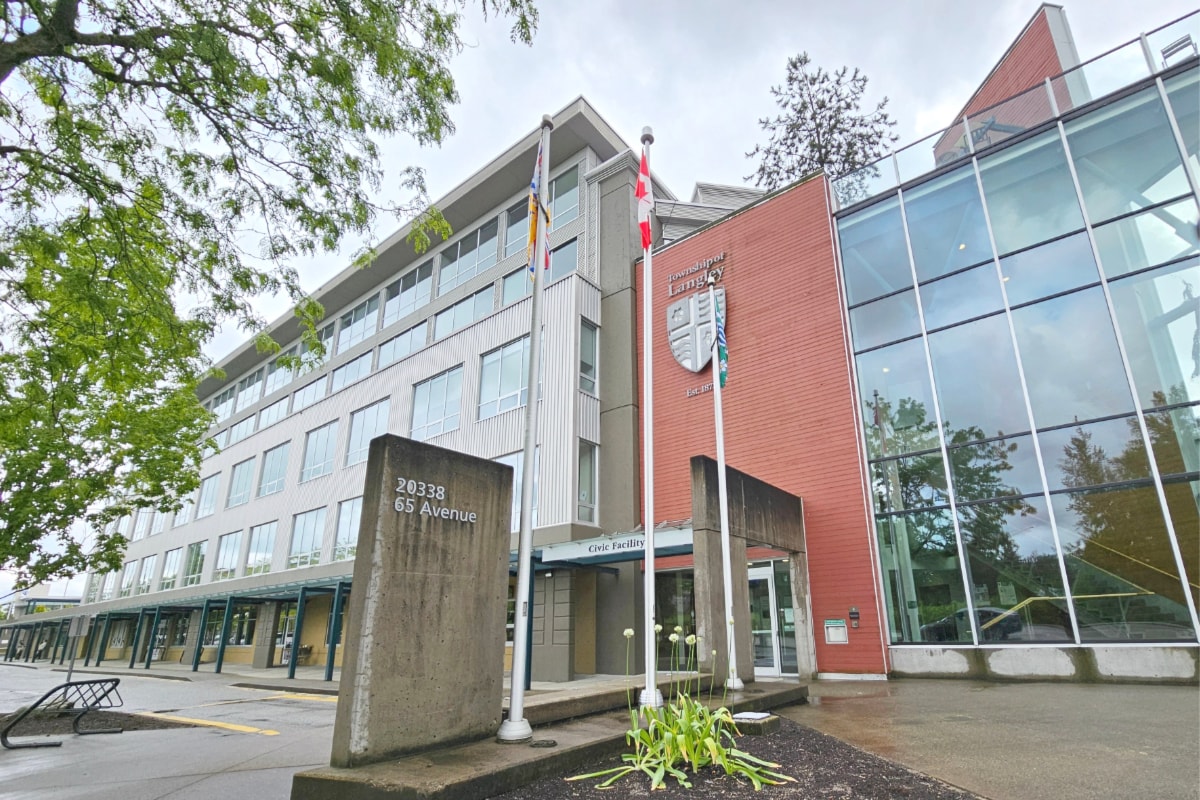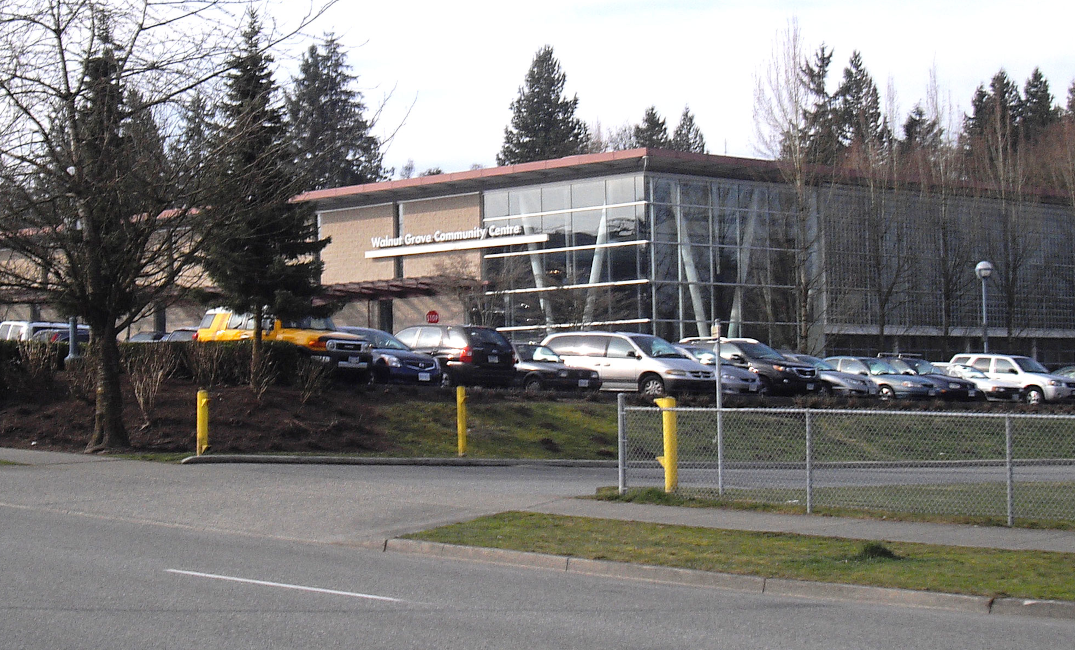Table of Contents
The best way to help The Langley Union grow is simple: share this newsletter. Forward it to a friend, mention it to your family, or post it on social media and encourage others to subscribe.
Langley Township is conducting a community ballot on traffic calming measures for Walnut Grove Drive between 88 Avenue and 212 Street, turning what should be a standard municipal infrastructure decision into a questionable exercise in digital democracy.
The corridor in question serves hundreds of townhome residents and multiple community facilities including Walnut Grove Secondary School, Walnut Grove Community Centre, Walnut Grove Community Park with its concentration of athletic fields, and James Kennedy Elementary School, making the safety of pedestrians (many of whom are children) a key consideration for residents throughout the area.
But the process itself raises serious questions about democratic participation and municipal accountability.
A Democratic Process Built on Quicksand
Rather than use any form of official municipal voting procedures, Township staff have opted for a basic SurveyMonkey form that asks residents a simple question: "Do you support traffic calming on Walnut Grove Drive between 88 Avenue and 212 Street?"
The survey requires only a name, address, and phone number to participate.
However, there appears to be no mechanism to verify that respondents actually live in Langley Township, let alone in the affected area, or even at the address which they list in their response.
When The Langley Union contacted the Engineering Department requesting clarification about voting eligibility and verification procedures, staff failed to respond.
This digital free-for-all could allow anyone with access to Google Maps and a few minutes to spare to cast multiple votes using real Township addresses.
As Walnut Grove resident Mike Parker noted in a recent letter to the Langley Advance Times, "Without much effort, you could vote 100 times as long as you use Google Maps to search for people's addresses."
Property-Based Suffrage Makes a Comeback
Even if the technical issues were resolved, the ballot structure itself resurrects 19th-century property-based voting.
Each household receives only one vote, regardless of how many adults live there. Basement tenants, despite paying property taxes through their rent, are entirely excluded from the process.
"The Township is reviving property-based suffrage instead of one person one vote," Parker observed, highlighting how the system privileges property owners over the working-class residents who actually use these streets daily.
The geographic limitations are equally problematic. Physical ballots were sent only to immediate neighborhood residents, despite Walnut Grove Secondary serving students from across the broader Walnut Grove area.
Parents whose children walk these streets every day may have been systematically excluded from a decision about their safety.
When Safety Becomes Optional
Perhaps most troubling is the Township's apparent decision to treat child safety as a matter of popular opinion rather than basic municipal responsibility.
Council members who campaigned on safe routes to school have seemingly now decided that protecting children requires a 60 percent supermajority from an unverified online poll.
The Township didn't hold a community ballot before building the Brookswood Fire Hall or installing traffic lights at other dangerous intersections. But somehow, ensuring that students can safely cross the street has become too controversial for elected officials to handle.
The proposed improvements are hardly radical: speed humps, curb extensions, raised crosswalks, and the reallocation of road space for bicycle facilities and on-street parking.
These are standard traffic management tools used successfully in communities across North America to reduce vehicle speeds and improve pedestrian safety.
The Broader Vision
What makes this process particularly frustrating is that these traffic safety improvements align perfectly with the region's broader transportation planning goals.
The proposed bi-directional bike lane would connect residential areas with community amenities while providing safe cycling infrastructure for children (and/or their parents) to get to school.
An increase in the number of parents who transport their children via walking and/or bicycles would also reduce car traffic in this area during the peak hours of pick-up and drop-off, making the area more easily accessible to motorists.
Regional transportation planning documents identify the South Fraser corridor as a priority for sustainable transportation development. Projects like these represent exactly the kind of people-first infrastructure that can reduce car dependency, creating more livable and affordable communities.
Instead of embracing this opportunity to build safer, more sustainable neighborhoods, Township staff have created a bureaucratic obstacle course which will potentially delay and even derail necessary safety improvements.
Community Organizing Beyond the Ballot
Despite the flawed process, Walnut Grove residents shouldn't give up on making their streets safer.
Community members can still engage with the ballot while organizing for more comprehensive change.
Concerned residents should attend Township Council meetings to demand better consultation processes and clearer democratic procedures. They can also connect with other parents and community members to build broader coalitions around transportation safety and infrastructure investment.
The real solution lies in recognizing that street safety isn't a luxury amenity subject to majority rule, but a basic municipal service that benefits everyone.
Children walking to school, families cycling to the community center, and residents navigating their neighborhood all deserve infrastructure designed for people, not just cars.
The Path Forward
Township Council directed staff in May to explore traffic calming, bi-directional bike lanes, new traffic signals, and on-street parking options for Walnut Grove Drive.
A full report is expected in early 2026, giving the community time to organize around a vision that prioritizes safety over the preferences of speeding drivers.
The ballot deadline is September 30.
Langley's children deserve streets designed for their safety, not online polls designed to avoid municipal responsibility.
The question isn't whether the community supports traffic calming, but whether Township Council will finally take seriously their obligation to protect the residents who elected them.
Follow this link to participate in the Walnut Grove Traffic Calming SurveyMonkey ballot
References and Resources




What did you think of this story?
Take our quick 2-minute survey to let us know how we're doing and what topics you'd like to see The Langley Union cover next.





